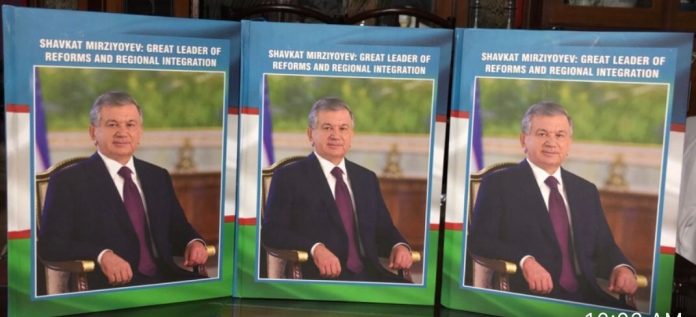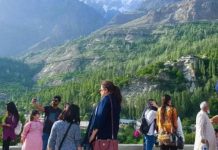Dr Mehmood Ul Hassan Khan
President: The Center for Knowledge and Public Policy
Regional Expert: Uzbekistan, China, CPEC, BRI & World Affairs
It is a joint publication of “The Center for South Asia and International Studies” and “The Center for Knowledge and Public Policy”. It has total pages of 442, words, 150,234, characters 1,017,00, paragraphs 4541 and lines 16,602 vividly reflecting momentous stature. It has nine chapters.
Interestingly, annual GDP growth has averaged between 5 and 6 percent since the reform drive began, and the national poverty rate has fallen to 8.9 percent which may be surpassed to 6 percent.
It is the first of its kind in Pakistan which covers more than 39 different subjects pertaining to the Republic of Uzbekistan’s economy, society, system, governance, leadership, structural reforms, national development strategies and last but not least regional connectivity.
I would like to share that the idea of writing a comprehensive book was discussed one year ago. It is not about “I” or “Me” it has been about “We” and “us” because all the topics have been selected through consultative mechanisms with three primer think tanks of Uzbekistan along with valuable inputs of its Foreign Ministry. It has been a byproduct of complete secrecy, constant close liaison and joint collaborative efforts of all of us.
I am personally thankful to the Embassy of Uzbekistan, H.E. Alisher the ambassador and the entire team who worked tirelessly to overcome all hurdles in the completion of this book. I am also thankful to all the Prime Think Tanks of Uzbekistan and MOFA for their extended cooperation and coordination. Last but not least I am thankful to Major General Khalid Amir Jaffari, the president of our Think Tank for his unwavering faith in my capabilities.
Interestingly it has 39 different subjects/topics relating to macro-economy, national development strategies, financial reforms, poverty eradication and generation of new jobs, regional connectivity, foreign policy, good governance, politicization, democratization, constitutional evolutionary journey, culture diplomacy and last but not least bilateral relations with Pakistan.
It is indeed a complete book and of course a “Missing Link” for the further strengthening of Pak-Uzbek bilateral relations in the right direction. It is full of workable solutions, suggestions and recommendations gearing Uzbekistan’s economy, society and system towards greater stability, sustainability, progress, prosperity and peaceful resolutions.
It is not all about “Appeasement Management Doctrine” because it always achieves short term gains and grains but for securing a long term sustainable success voices of genuine scholars, experts and strategists must be heard and respected for a progressive society, liberal economy, people’s centric governance, financial decentralization, qualitative industrialization, modernization and connectivity and this books based on a holistic and comprehensive scheme has covered all secrets of human survival, societal striving towards economic self-reliance, national resistance and above all strategic vision of leadership in shape of H.E. Shavkat Mirziyoyev the President of Uzbekistan. It diminished storytelling and stereotype presentation and self-calming of senior expert syndrome.
Therefore, the author rightly submits that the policy makers of Uzbekistan must keep pushing on structural reforms: modernizing utilities, improving education, expanding broadband access, and ensuring transparent public investment. These efforts will determine whether the current boom can evolve into long-term, sustainable prosperity.
It is a narration of economic liberalization, institutionalization of Foreign Direct Investments, journey from centralization to decentralization, connectivity and immense people’s welfare. It has transcended journey of centuries into a book which provides suggestions to transform ancient civilization, traditions and culture into cashable commodities through a complete scheme of arrangement, brotherhood into a best practiced model of doing business and last but not least similarities into ships of socioeconomic integration, industrial cooperation, joint ventures and development of productive channels.
Obviously, this miraculous socio-economic development did not happen by chance. Since President Shavkat Mirziyoyev came to power in 2016, Uzbekistan has pursued a series of market-oriented reforms to dismantle decades of economic isolation and stagnation. The government unified the exchange rate, lifted currency restrictions, and simplified customs and tax rules. It began privatizing state enterprises, liberalizing trade, and reducing barriers to foreign business.
It is not all about its folks and fairy tales, rather it is all about converting these treasures into the “Human Libraries Model” commonly uses in most of the modern countries and communities around the globe to attract more and more regional as well as global tourists. Hence it is about “Figures” which speak by themselves, mitigating all false, fake and fabricated propaganda about Uzbekistan’s economy, society and system.
I humbly request all of you to please rise above your claims of “Islamabad as your Ancestral Property and let us work jointly for the further strengthening of Pakistan’s soft image and bilateral ties because pure talent, intellect, good human spirit and wisdom is a universal commodity. So stay blessed and connected.
To conclude, it is suggested that both countries should focus on the creation of joint ventures in sectors such as the textile industry, garments, fashion industry, agriculture, pharmaceuticals, and information technology. Interestingly, now there are 130 joint ventures operating in Uzbekistan with Pakistani capital participation.
I just quote the latest published report of the world bank clearly indicating stability and sustainability of Uzbekistan’s macro-economy which has been rated as one of the five fastest-growing economies in the broader Europe and Central Asia region. The report projects Uzbekistan’s GDP will expand by about 6.2 percent in 2025 well above the regional average amid an overall slowdown across emerging European and Central Asian markets. Overall regional GDP growth is expected to ease to roughly 2.4percent in 2025, down from 3.7 percent in 2024.

















